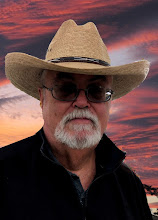I’d read a number of pulp stories over the years by Edwin Truett Long, writing under various pseudonyms and house-names, and I always enjoyed them. But I’ve become more interested in him and his work since discovering that he lived for a while on the west side of Fort Worth and is buried on the east side. One of these days, I’m going to drive over to the cemetery and find his grave. But for now, I’m trying to read more of his stories. This time, it’s “Crime Nest”, from the April 1940 issue of DETECTIVE DIME NOVELS, which was published under the transparent pseudonym Edwin Truett. This is the first of three novels featuring Dr. Thaddeus C. Harker, one of the more offbeat characters from the pulp era.
Doc Harker, as he’s often known, is a traveling medicine show huckster, tooling
around the country in a bright red coupe and pulling an equally red trailer in
which he concocts his cure-all, the world-famous Chickasha Remedy. However,
that’s just a cover for his true activities. Doc Harker is actually a brilliant
scientific criminologist, and his passion is solving murders and other crimes
with the help of two assistants, former wrestler Hercules Jones, who handles
the strongarm stuff, and the beautiful Brenda Sloan, whose specialty is infiltrating
gangs and gathering intelligence. In “Crime Nest”, our intrepid trio of
detectives heads for Abbottsville, a resort town in Texas (although Long never
specifies the state) famous for its hot springs. Abbottsville is loosely based
on the real town of Mineral Wells.
They’re there in answer to a plea for help from one of Doc’s old friends, who
sends Doc a letter explaining that a cabal of criminals from New York and New
Jersey have moved in and taken over the town. Doc intends to break their hold on
the place and bring them to justice, but the situation gets more complicated
when there’s a grisly murder the first night after they arrive.
From there it’s mostly breakneck action with a little detective work thrown in
as Long packs in a lot of plot in the span of not much more than 24 hours. More
murders, a missing fortune, beautiful women, shootouts, clouts over the head,
and lights that go out just as Doc is about to spring a major revelation—we get
all that good stuff and more. Long wasn’t a meticulous plotter, but he usually
wrestles all those colorful characters and fast-paced action into scenarios
that make sense, mostly.
I really enjoyed this yarn and had a grand time reading it. It’s the kind of
stuff I grew up on and I still get a kick out of it. One interesting note: the
character who sends for Doc Harker is named Arthur Wallace, which just happens
to be the name of a pulpster who contributed scores of stories to the Spicy
pulps, as did Long. There’s been some mystery as to whether Wallace was a real
name or a house-name. Based on Long using the name in this novel, I suspect he was
a real guy and that he and Long were friends. That’s only a hunch, though.
Maybe somebody will uncover the facts someday.
My friend Tom Johnson was a fan of the Doc Harker series and reprinted all
three novels as small-press chapbooks many years ago. I owned all of them but
never got around to reading any of them. More recently, Altus Press has reprinted
the series in a handsome volume called DR. THADDEUS C. HARKER: THE COMPLETE
TALES, with an introduction by none other than Tom Johnson, who provides more
biographical information about Long than I’ve found anywhere else. This is where I
read “Crime Nest”. The collection is available in paperback and e-book
editions, and if you enjoy offbeat pulp detective yarns, I give it a high
recommendation.















